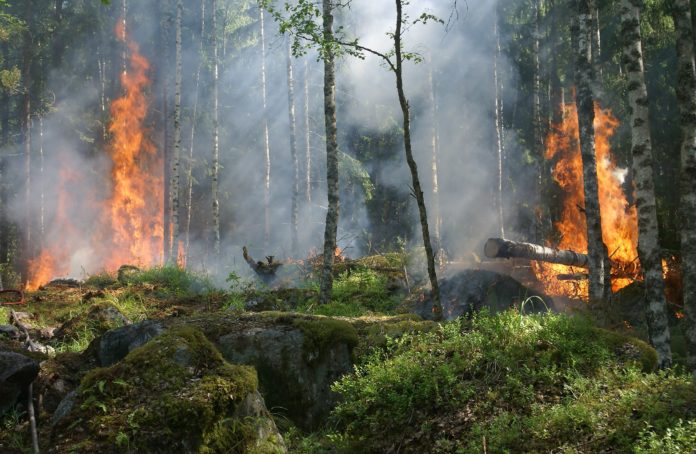Wildfire season is fast approaching in Canada, and with it comes a number of risks to both our health and the environment. While the short-term risks of wildfires may seem clear, a new study from McGill University has found that living near wildfires can also increase your long-term chances of developing lung and brain cancer.
The study included contributions from Scott Weichenthal, an Associate Professor in the Department of Epidemiology, Biostatistics, and Occupational Health, and was published in The Lancet Planetary Health.
Around 8,000 wildfires occur each year in Canada, and thanks to climate change, this number seems to be increasing. Canadians living in British Columbia, the Prairies, and the Yukon and Northwest Territories are at the highest risk. And with the number of wildfires increasing each year, these risks will only get worse over time.
Although we know a lot about the immediate effects of wildfires on our health, the long-term outcomes are less clear. This is what Weichenthal and colleagues set out to investigate with their study.
“Wildfires tend to happen in the same locations each year, but we know very little about the long-term health effects of these events,” Weichenthal said in a press release.
To learn more, the team used data from the 1996 Canadian Census Health and Environment Cohort. The study tracked the rates and outcomes of cancer diagnoses for more than two million Canadians over the course of 20 years.
The researchers then assigned levels of wildfire exposure to each study participant based on their postal code. They also accounted for changes in exposure level over time (for example, if a participant moved during the 20-year period).
Their results showed that long-term exposure to wildfires can lead to increased risks of cancer. For example, study participants who lived within 50 kilometres of wildfires over the course of 10 years developed brain tumours 10% more frequently than participants who lived further away.
Living within 50 kilometres of wildfires also led to a 5% higher chance of developing lung cancer.
The researchers believe that these results could be due to pollutants that are released into the environment during wildfires. Air pollution is a particular concern, because many of the particles released by wildfires are small enough to enter our noses and make their way to our lungs. Many of these particles are carcinogenic.
Some of these pollutants will cycle through the environment and return to normal concentrations soon after the wildfire. However, fires can also cause heavy metals like lead and mercury (from paint and electronics, for example) to enter our soil and waterways. These pollutants are not biodegradable, and will remain in the environment long after the wildfire is out.
They are also carcinogenic, which means that they can continue to pose a health risk for years to come.
“Exposure to [these] harmful environmental pollutants might continue beyond the period of active burning,” Weichenthal said.
These findings are alarming, and as wildfires continue to increase in number each year, the risks will only get worse. While some wildfires are necessary for the health of our forests, it’s important that we fight climate change to prevent wildfire season from getting out of control.
We also need to focus on wildfire prevention and management close to residential areas. Cancer is already the leading cause of death in Canada, and by allowing wildfires to encroach on residential areas, we’re just adding fuel to the fire.








































